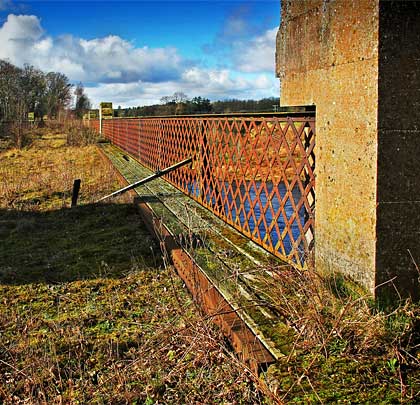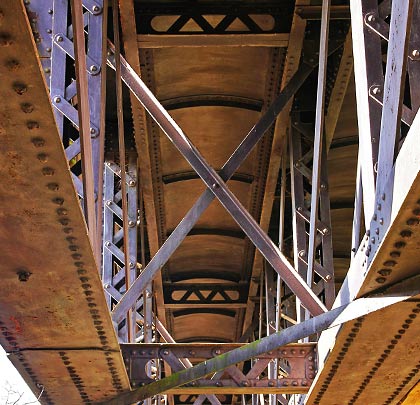Cargill Viaduct
Cargill Viaduct


















Authorised in July 1845, the Scottish Midland Junction Railway was formed to establish a link between the Scottish Central Railway at Perth and the Aberdeen Railway at Forfar, incorporating the Newtyle Eassie & Glamiss and Newtyle & Coupar Angus railways en route. It opened on 4th August 1848 and merged with the Aberdeen Railway in 1856 to form the Scottish North Eastern Railway. A decade later, this was in turn absorbed by the Caledonian Railway. The line was highly trafficked, having become the main route between Aberdeen and the south, with 153 passenger trains using it and the associated branches on a weekday in 1910.
Passing mostly through farmland, the engineering was relatively light. The line’s most notable structure (no.KAS/149) was a viaduct of five timber arches across the River Tay between Ballathie and Cargill. This was a product of Joseph Locke and John Errington, with John Stephenson & Co acting as contractors. Around 1890, to allow an increase in linespeed, the timber was replaced with steel but the original masonry piers and abutments were reused following modification.
Each 100 feet in length, the viaduct’s spans now comprise four Pratt trusses, tied together with cross members and offset to form a skew. The piers – with their substantial cutwaters – are aligned with the river’s flow. Using elegantly curved steelwork, cantilevered off both sides are wooden walkways and latticed parapets. Overall, the structure extends for almost 200 yards, its deck now grass-covered and relatively clutter-free.
Regular passenger services over the viaduct ended in September 1967 but the line maintained its operational status until 5th June 1982. The structure remains a substantial and imposing feature of the local landscape although its appearance is done no favours by palisade fencing at both ends.







